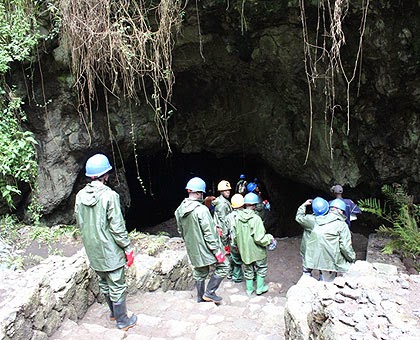Mountain Gorillas
Mist Gorillas in East Africa.
The mountain gorilla is the largest of all the gorillas and
is the most endangered. The world’s remaining 820 mountain gorillas live in
three different countries in Central Africa: Democratic Republic of Congo,
Rwanda, and Uganda. Mountain
gorilla trekking is the most popular tourism activity in these countries and attracts thousands of visitors into these countries. Although this makes their range seem large, the mountain
gorillas actually inhabit a small geographic area where the borders of these
three countries meet. Over half of the world’s mountain gorillas can be found
amidst the Virunga chain of volcanoes and the remaining populations live in
Uganda’s Bwindi Impenetrable Forest some 75 km to the north.

Unlike their lowland counterparts, the mountain gorillas
have long hair, which helps them handle the temperature extremes found at
altitude. Mountain gorillas live in large family units led by a single dominant
adult male, known as the “Silverback” — a name derived from the grey hair that
develops on male’s back as it reaches adulthood. The Silverback is responsible
for protecting the family from predators or other threats, including solitary
Silverbacks intent on claiming females as their own. The dominant Silverback
also takes on the role of mediator when disputes arise in the family. Some
families contain more than one Silverback, but only one is dominant and that
male alone is responsible for mating with the adult females of the group.
The sub-adult males of the family are known as “Blackbacks”.
Adult females are generally half the size of the males and it is their
responsibility to initiate mating with the dominant male, as well as care for
the infants.
In general they are very peaceful creatures. Most days are
spent foraging for food, playing, and grooming. The mountain gorilla’s
fierceness has been seen protecting its young from illegal animal trafficker’s
intent on capturing baby gorillas. For every mountain gorilla baby that is
found in the marketplace, an entire family of gorillas has died trying to
protect it.
Gorillas get sick.
Because mountain gorillas share approximately 97% of our
DNA, they are susceptible to the same diseases as humans. Unlike humans,
however, their resistance is much lower. Sicknesses that the average human can
beat with bed rest and antibiotics can prove fatal to the mountain gorilla.
More serious outbreaks, such as Ebola or virulent strains of influenza could
take the few remaining mountain gorilla populations beyond the point of return.
However it is advisable that tourists only visit gorillas
when healthy and keep a minimum distance of 25 feet (7 meters) away to protect
them from getting affected by diseases.
Actually Understanding the nature of mountain gorillas, and
the threats they face, is the first step in assuring their preservation.
The Gorilla Doctors
healthcare program includes:
·
Staging medical interventions to dart sick
animals with antibiotics or anesthetize and treat gorillas suffering from
human-induced or life-threatening trauma.
·
Rescuing and providing veterinary care to
gorillas orphaned by poachers.
·
Documenting and studying health trends to better
predict disease outbreaks.
·
Conducting post mortem examinations on dead
gorillas to learn all that we can about the health problems that contributed to
their deaths.
·
Preserving tissue and fluid samples to be used
by researchers investigating primate health issues.
·
Providing preventive healthcare to the dedicated
park personnel who protect the gorillas, and to the people and their animals
that live near gorilla habitat, in order to reduce the risk of inter-species
disease transmission.















